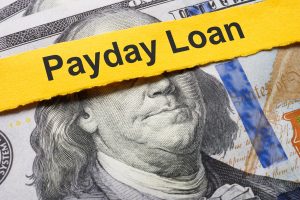How The Deficit Could Make Mortgage Interest Like Payday Loans
 We’ve all heard the alarm bells on the U.S. national debt. More importantly, we’ve heard that a growing deficit can ultimately result in higher mortgage interest rates. But why? And how?
We’ve all heard the alarm bells on the U.S. national debt. More importantly, we’ve heard that a growing deficit can ultimately result in higher mortgage interest rates. But why? And how?
I’ve had to try to figure this out for years, and here’s how I finally had to explain it to myself.
Just like when we get too much credit card debt compared to our income, people are less willing to lend us even more money. The way investors lend the government money, it’s in the form of selling securities, like notes, bonds and treasuries.
In this case, investors are things like pension funds, individuals, and international investors who have long seen the United States as a good borrower who will pay its debts.
However, as that debt grows, people start to think maybe government backed investments are riskier. If it gets too big, like Greece with a GDP to debt ratio of over 150%, then the only game left in town is a Payday Loan.
And just like Payday Loans, money comes at a high price. After all, the higher the risk, the higher the reward they expect. It makes sense. Most of us would expect something in return for sacrificing safety. And to those for whom safety matters above all else, investors may move their money to something predictable, like mortgage backed securities.
In order for the U.S. government to convince investors to once again buy securities (lend them money), they agree to pay it back at a higher interest rate. That makes the return more attractive, which may entice investors to take on more risk.
That, in turn, means the mortgage backed securities have to do the same. Mortgage backed securities are investments in bundles of mortgages sold off by banks. The investor makes the return on the interest borrowers pay, while the bank takes the money received through the investor pool and lends it to consumers. To attract those investors to keep buying those groups of loans, banks have to charge borrowers higher interest rates so they can provide a greater return.
If you think we can’t be like Greece, which had so much debt the government had to implement austerity measures and get a bailout from the EU, to whom it owed much of its debt, think again. According to the Congressional Budget Office, if the deficit grows by even $20 trillion over the next 10 years, by 2050 debt levels will reach 155% of gross domestic product.
It is estimated the Big Beautiful Bill currently before Congress would add somewhere between $3 and $4 trillion dollars to the U.S. deficit over the next 10 years.

